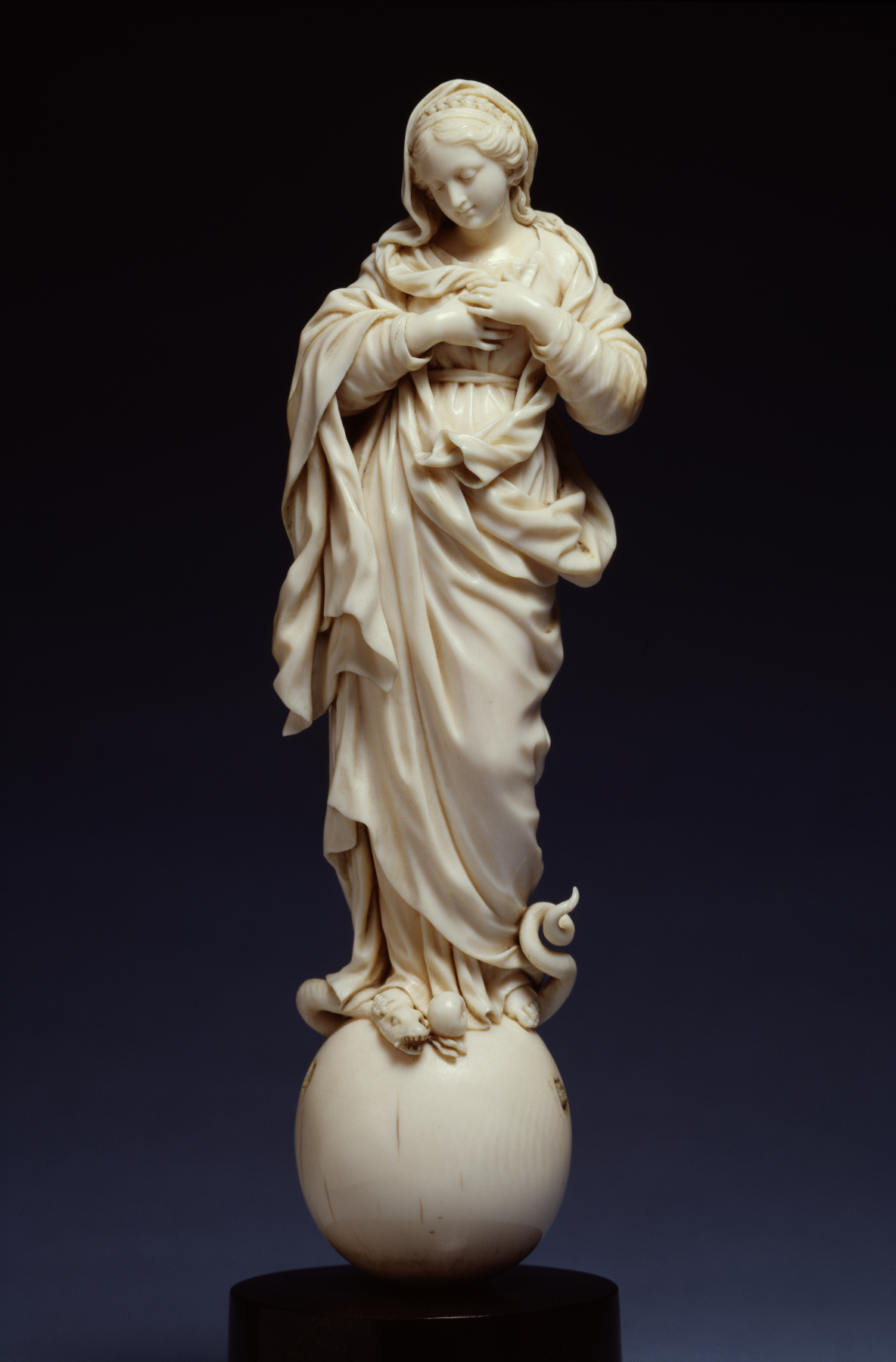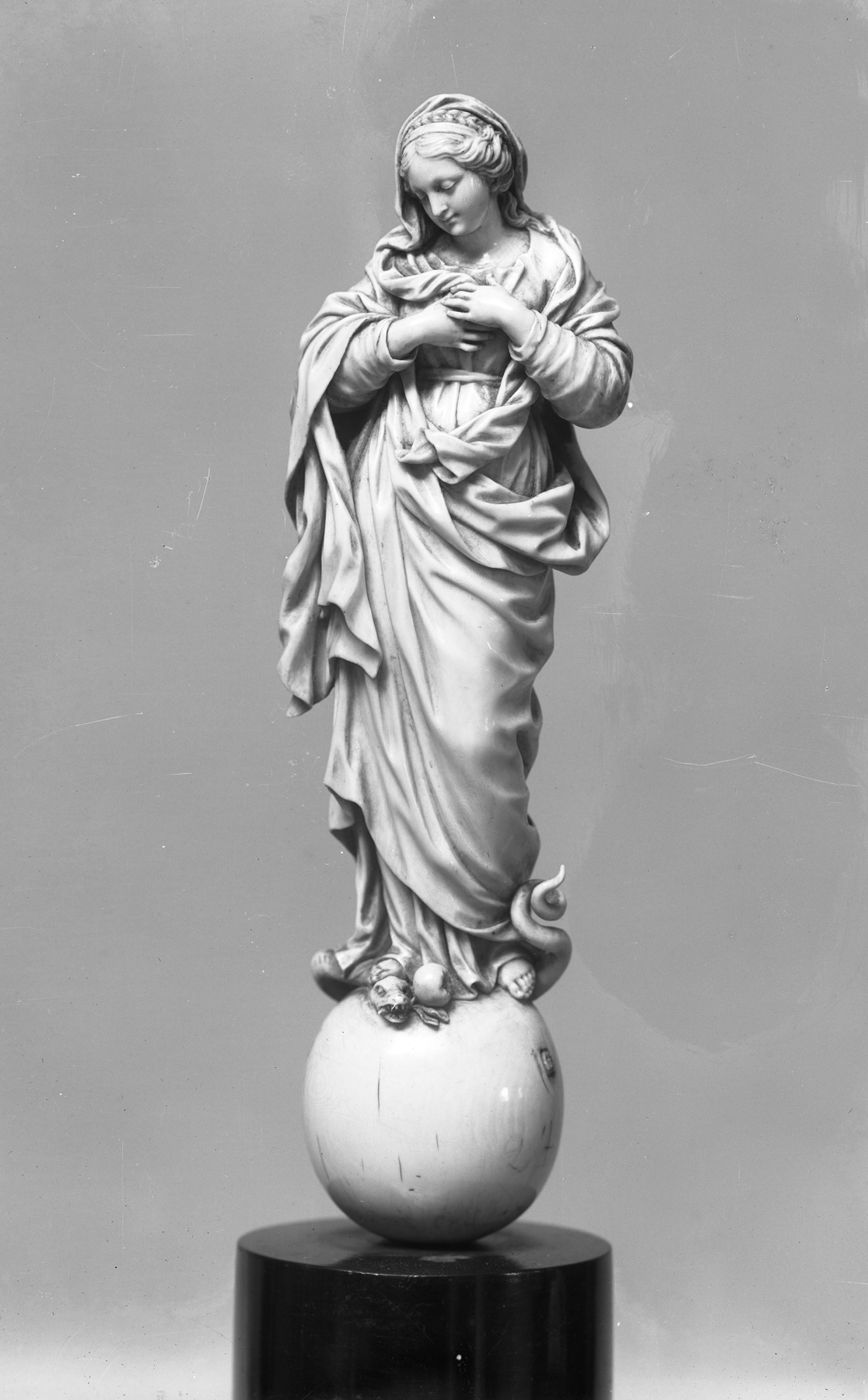Virgin of the Immaculate Conception
(Baroque Europe )
The Virgin as the "Immaculata" (conceived in immaculate purity), stands on the globe of the world (originally supported by cherubs), in triumph over sin (Revelation 12), represented by the serpent that tempted Eve with a forbidden apple. The archdukes were devoted to the Immaculata. In celebration of Albert's military victories over Dutch forces and the truce of 1609, they built a chapel to her.
The subtly flowing, voluminous drapery and sweetly sensitive face are characteristic of ivory carving in Liège in the independent Bishopric of Liège, within the Southern Netherlands.
Provenance
Provenance (from the French provenir, 'to come from/forth') is the chronology of the ownership, custody, or location of a historical object. Learn more about provenance at the Walters.
Henry Walters, Baltimore [date and mode of acquisition unknown]; Walters Art Museum, 1931, by bequest.
Exhibitions
| 1983-1984 | Ivory: The Sumptuous Art. The Walters Art Gallery, Baltimore. |
Conservation
| Date | Description | Narrative |
|---|---|---|
| 10/1/1945 | Treatment | cleaned |
| 1/11/1962 | Treatment | cleaned |
| 10/23/1987 | Treatment | cleaned |
| 10/23/1987 | Examination | examined for condition |
| 4/28/2005 | Treatment | cleaned |
Geographies
Belgium, Liège (Place of Origin)
Measurements
H: 8 1/4 in. (20.9 cm)
Credit Line
Acquired by Henry Walters
Location in Museum
Accession Number
In libraries, galleries, museums, and archives, an accession number is a unique identifier assigned to each object in the collection.
In libraries, galleries, museums, and archives, an accession number is a unique identifier assigned to each object in the collection.
71.402




